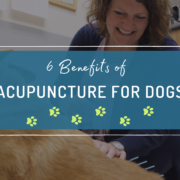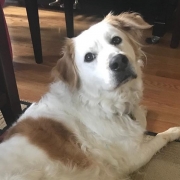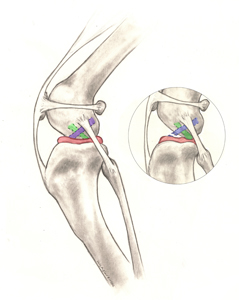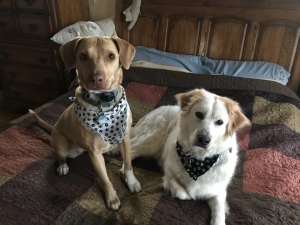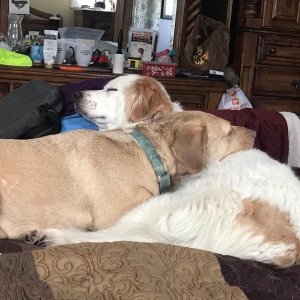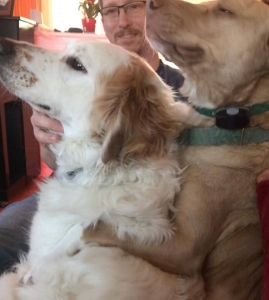
Dr. Tasha Wilson treats a patient in her clinic with acupuncture.
Veterinary acupuncture for dogs (and other pets) is a therapeutic treatment method that involves the insertion of sterile needles. For humans, acupuncture is a fantastic alternative or complementary treatment to treat chronic pain. For pets, the benefits can span much further. In fact, acupuncture for dogs has been shown to improve blood circulation, assist in allergy treatment, help heal wounds, as well as prevent inflammatory diseases and chronic pain.
Many pet parents report that during and after acupuncture treatment, their four-legged friend is more content, mellow, as well as mobile. If you’re thinking about using alternative treatments to help your dog recover from an acute injury or a long-term health issue, here are 5 benefits of acupuncture that may help seal the deal.
- Gastrointestinal Relief: Acupuncture at Acupetvet has been shown to relieve GI issues in both dogs and cats with IBS and diarrhea.
- Faster Recovery from Herniated Disk: As pets age so does their spine. In the cases of a herniated disk, acupuncture points are placed based on their location to major spinal nerves of the body. Placing the needles at these locations allows the body to release endorphins, norepinephrine, and anti-inflammatory mediators and allows the body to heal itself naturally.[1]
- Relief from Lick Granulomas: Continuous licking or gnawing at the skin or “hot spot” can cause an irritating sore exposing superficial nerve endings. These lesions are often very difficult to heal. Along with traditional medicine, like antibiotics, acupuncture has been shown to speed the healing time for lick granuloma wounds.
- Increase In Appetite: For dogs with metabolic diseases like diabetes, kidney or liver failure, pancreatitis, Cushing’s disease, and Addison’s disease, acupuncture has been shown to decrease nausea leading to an increase in appetite.
- Decrease Trauma-Related Anxiety: For pets that have had a traumatic injury like a broken bone or ligament tear, using acupuncture before and after surgery or treatment can help reduce anxiety as well as pain.
- Relief from Cancer Side Effects: Seeing our beloved pets suffer from cancer is heartbreaking. The good news is acupuncture is shown to increase energy, and decrease nausea and loss of appetite so pets can live their best lives.
What To Expect During Acupuncture For Dogs:
Dr. Tasha Wilson will insert needles in specific areas of your dog’s body called acupuncture points. For most dogs, this is virtually painless and they don’t notice the needles going in. Dr. Wilson has treats on hand to keep younger dogs or nervous dogs occupied. Oftentimes, dogs become very relaxed and even fall asleep. Note that the more relaxed you are, the more relaxed your dog is likely to be.
If we notice that your dog starts to experience pain or fear during an acupuncture session, we can discuss other options like laser therapy to help your dog feel more comfortable. Most often, once a dog realizes that acupuncture doesn’t hurt and that they feel better during and after a session, they’ll calm down and enjoy their treatment time with us.
Here is Jenkins enjoying his acupuncture session with Dr. Wilson:
Acupuncture Resources:
- Influence of acupuncture in treatment of knee osteoarthritis and cartilage repairing
- Acupuncture Repairs Knee Arthritis Cartilage Damage
- How Does Medical Acupuncture Work? Is It Safe?
[1]: https://healingpawsfl.com/treat-intervertebral-disc-disease-dog/

